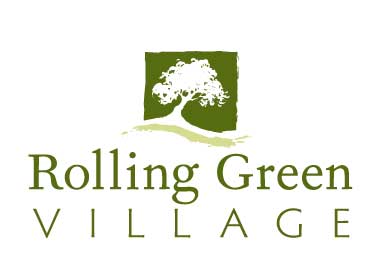Everyday tasks like cooking a meal, getting dressed, or moving around safely can feel overwhelming after an illness, injury, or health change. That’s where specialized support can make a real difference. You may be wondering, what is occupational therapy for seniors? Simply put, it’s a form of care designed to help people continue living as independently and fully as possible.
Rather than focusing only on a diagnosis, occupational therapy looks at the whole person—their routines, environment, and goals—and develops practical strategies to make daily life easier and more fulfilling.
Occupational therapy is often recommended when an illness, injury, or age-related change makes daily activities harder to manage on your own. Therapists begin with a personalized evaluation, then design an intervention plan tailored to your needs and goals, adjusting it over time to ensure steady progress and lasting results. Let’s take a closer look at what is occupational therapy for seniors to better understand the unique benefits it can provide.
What Is Occupational Therapy for Seniors and How Does It Differ from Physical Therapy?
It’s common to confuse occupational therapy for seniors (OT) with physical therapy (PT), since both focus on helping people recover, regain function, and avoid future injuries. In fact, many patients benefit from receiving both types of therapy at different stages of their recovery. While there is some overlap, each discipline has a unique focus.
Physical therapy primarily addresses the body’s physical functions—strength, mobility, flexibility, and movement. A physical therapist might work with someone to rebuild muscle after surgery, improve balance to prevent falls, or manage chronic pain through targeted exercises. The main goal is to restore physical function so the body can move and perform safely.
Occupational therapy, on the other hand, takes a broader approach. Rather than focusing only on the physical recovery of the body, OT looks at the whole person in the context of their daily life. An occupational therapist helps patients find practical ways to adapt and remain independent, even when full recovery isn’t possible. For example, they may:
-
Teach strategies for dressing, bathing, or cooking safely after a stroke or injury.
-
Recommend adaptive tools such as grab bars, reachers, or ergonomic utensils.
-
Help create a safer home environment to reduce fall risks.
-
Support emotional and cognitive well-being by focusing on meaningful activities and routines.
In short, physical therapy helps the body heal and regain strength, while occupational therapy helps people live well with their current abilities—bridging the gap between recovery and everyday life. Together, they provide a comprehensive support system that empowers seniors to stay active, independent, and engaged.
What Are the Benefits of Occupational Therapy for Seniors?
Understanding what occupational therapy for seniors is helps highlight the many ways it can improve a person’s overall well-being. Occupational therapy isn’t just about treating an injury—it focuses on helping individuals live safely, independently, and with confidence in their everyday life. Its benefits can be grouped into three main areas: physical, emotional, and cognitive wellness.
Physical Wellness
Occupational therapy for seniors also plays a key role in maintaining and improving physical wellness beyond daily safety strategies. For seniors recovering from a hospital stay, surgery, or injury, occupational therapy can:
-
Help rebuild strength, coordination, and endurance to return to normal routines.
-
Develop personalized exercises to manage chronic conditions and reduce pain during movement.
-
Teach safe techniques for transferring, walking, or using assistive devices to prevent re-injury.
-
Support gradual, structured rehabilitation that helps seniors regain independence at home.
By focusing on recovery, mobility, and functional strength, occupational therapy ensures seniors can resume their daily activities with confidence and safety.
Emotional Wellness
Struggling with daily tasks can be discouraging and lead to frustration or depression. Occupational therapy for seniors focuses on solutions rather than limitations, helping patients regain a sense of control and purpose. Benefits include:
-
Boosting confidence by enabling independence in meaningful activities.
-
Reducing stress and anxiety related to daily challenges.
-
Encouraging social engagement and participation in hobbies, which enhances overall mood and outlook.
Cognitive Wellness
For seniors experiencing memory loss or early stages of dementia, occupational therapy can play a vital role in maintaining independence and quality of life. Occupational therapists work on a variety of tasks:
-
Developing personalized treatment plans to address memory or cognitive challenges.
-
Teaching strategies that help patients complete everyday tasks like dressing or managing medications.
-
Adjusting the living environment to minimize risks such as wandering or confusion.
-
Guiding caregivers on how to respond to behavioral changes and provide supportive care.
By addressing physical, emotional, and cognitive wellness together, occupational therapy empowers individuals to live more fully and independently, making it a key part of holistic care.
What Are Five Examples of Occupational Activities for Seniors?
Occupational therapy programs are designed to help seniors maintain independence, manage chronic conditions, and improve overall quality of life. These programs often include a variety of activities that target physical, cognitive, and emotional well-being. Here are five examples of occupational activities commonly used for seniors:
-
Daily Living Skills Practice
Seniors work on activities such as dressing, grooming, cooking, or using adaptive utensils. These exercises help maintain independence and ensure they can perform essential tasks safely. -
Cognitive and Memory Exercises
Activities like puzzles, memory games, and problem-solving tasks support mental health and help slow cognitive decline. Occupational therapists often integrate these exercises into customized programs for seniors experiencing memory challenges. -
Fine Motor Skill Activities
Tasks such as knitting, drawing, or manipulating small objects improve hand-eye coordination and dexterity. These exercises are particularly helpful for seniors managing chronic conditions like arthritis or recovering from injury. -
Balance and Mobility Training
Gentle exercises and movement routines enhance balance, coordination, and strength, reducing the risk of falls. Occupational therapy assistants often lead these sessions under the guidance of a licensed therapist. -
Leisure and Social Engagement Activities
Participating in arts and crafts, music, or group games fosters social connections and promotes emotional well-being. These activities are a key part of occupational therapy programs aimed at improving mental health and overall life satisfaction.
By incorporating these activities, occupational therapy programs help seniors remain active, independent, and engaged, while also addressing physical, cognitive, and emotional needs.
When Is Occupational Therapy for Seniors Needed?
Occupational therapy for seniors is wonderfully versatile, so it can treat a number of challenges that seniors may face. You might seek out this kind of treatment if you’ve experienced any of the following incidents or impairments:
- Stroke
- Heart attack
- Fall
- Surgery recovery
- Severe depression and anxiety
- Memory loss and Parkinson’s Disease
- Arthritis or carpal tunnel syndrome
When you’re facing any of these challenges, you will likely benefit from working with a team of professionals, including an occupational therapist. Depending on your condition, you may also enlist a physical therapist, dietitian, speech pathologist, psychologist or social worker, etc.
Rolling Green Village is a Life Plan Community in Greenville, SC that offers the rare opportunity to assemble your team right where you live, so you can begin to heal as quickly as possible.
What is Occupational Therapy for Seniors Like at Rolling Green Village?
Now that we have answered “what is occupational therapy for seniors?” and how it supports independence, daily function, and overall well-being, you can see how valuable it can be as part of a holistic care plan.
Occupational therapists at Rolling Green Village provide personalized support tailored to each resident’s unique needs, helping them stay active, safe, and engaged in meaningful activities.
Occupational therapy for seniors is part of Rolling Green VIllage’s comprehensive approach to care. Our team works closely with residents to:
-
Conduct personalized evaluations and develop tailored intervention plans.
-
Provide ongoing support to ensure strategies are effective and goals are met.
-
Adapt the environment and recommend tools or techniques to make daily life safer and more manageable.
-
Support both residents and their families with guidance, education, and resources.
Whether you’re recovering from an injury, managing a chronic condition, or looking for ways to stay independent as you age, Rolling Green Village offers the health services and life-enhancing therapies to help you thrive.
Contact us today to learn more, ask questions, or schedule a tour to see how occupational therapy for seniors can make a meaningful difference in your life.





